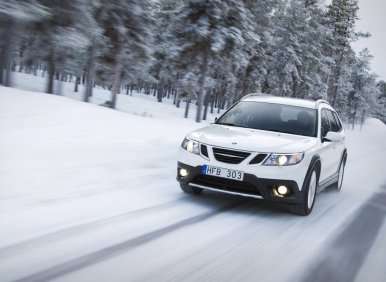Recent Articles
Popular Makes
Body Types
Winter Car Storage Tips

winter snow ski
If you live in a harsh winter environment, storing your favored car during colder months will extend its longevity. Sports cars in particular are exceptionally vulnerable to the conditions winter driving present. They sit lower to the ground, so driving through deep snow has a tendency to embed it in areas you’d rather not see it get into. Plus, road salts and chemicals put down for snow removal are wicked hard on your chrome, paint and alloy wheels.
Further, the wonderfully sticky wide tires that make your car handle so well in warmer months work against it on snow. Yes, you can always switch over to a winter tire and wheel set, but the rest of your toy will still be exposed to Mother Nature’s dark side.
If you can afford a second car, store the fun one in winter.
However, there’s more to winter car storage than pulling into a garage in November, closing the door and walking away. To store a car for the winter, you need to take some precautions to make sure it comes out just as good as it went in
Items You’ll Need
• Wrench/socket set
• Floor Jack
• Four Jack Stands
• Plastic sheeting
• A Thick, Fitted, Permeable Car Cover
• Battery Tender
• Car’s Owner’s Manual
• Engine Oil and Filter
• Engine Coolant and Distilled Water
• Clutch/Brake Fluid
• Power Steering Fluid
•Transmission Oil/Fluid
• Windshield Washer Fluid
• Gasoline/ Fuel Filter
• Steel Wool/ Steel Building Patches, a Hammer and Nails.
• Car Polish, Chrome Polish, Car Wax, Leather Cleaner/Conditioner/Preservative
• Fuel System Stabilizer
• A Garage With Electricity

The Garage
Your biggest ally is the garage. The one you choose should have a concrete floor. The garage should also be clean, dry, pest-free, rodent-free, and wired for electricity. Lockable is good, you’ll also want to be able to get into it readily if you need to remove the car before the hibernation period ends.
Before you commit your car to the space, sweep it, dust it, and do everything else you can to get it as clean as possible, including dusting the walls. You want the car’s winter habitat to be as clean as possible. Extraneous dirt can turn into a problem for your car over a period of few months.
Rodents can nest in your car and ruin it, so examine the garage carefully for evidence of them, as well as places where they could enter. Plug any you find with steel wool, then nail a steel building patch over the plug.

Fluids
Freshly changed fluids will sit without deteriorating significantly. Change the oil and filter, brake fluid, transmission fluid (or the clutch fluid and transmission oil if your car has a manual transmission). Drain the cooling system and refill with a mixture of coolant and distilled water.
Fill your gas tank completely to prevent water condensation. Water can dilute fuel and rust fuel lines. Before you fill the tank, change the fuel filter and add fuel stabilizer. Keep in mind most fuel stabilizers require you to drive the car for a bit to make sure it gets circulated through your fuel lines. Follow the directions on the package to make sure you get this critical step correct.

Cleaning
Next, clean the car as thoroughly as possible.
Start with the interior to ensure the efforts you take to clean the interior don’t contaminate the exterior. Vacuum the carpets and shampoo them if needed. Make sure no food is left in the car, particularly underneath the seats. The last thing you need is a rodent to smell food and decide to take up residence over the winter.
If the car is upholstered in leather, treat the dash, door panels and seats with leather conditioner and cleanser. Clean the windows, and make sure remove discs from the CD player.
Once you’re satisfied with the inside, do the outside. Wash, polish, and wax all painted surfaces. Polish all of the chrome, clean the wheels and inside the wheel wells as well. Also clean the undercarriage of the car as thoroughly possible. If you want to be extra meticulous, steam clean the engine compartment too.

Tucking In
Before you roll into the garage, lay the plastic sheeting over the floor, taking care to keep the sheeting as clean and dust-free as possible. This keeps moisture from rising out of the floor and condensing on the bottom of the car. It’s also another barrier against rodents.
Consult your owner’s manual to find the four hard points beneath the car. Distribute jack stands around the garage accordingly. Roll the car into place, use the floor jack to lift the car, and place the stands. This takes the weight off the tires and suspension system. Leave the parking brake off so the brake pads won’t fuse against the rotors. Leave a manual transmission in neutral.
With the car on the stands, start the engine and remove the fuel pump fuse. Figure out which one it is by consulting your owner’s manual. Run the engine with the pump disabled until the engine dies. This takes the pressure out of the fuel lines.
After letting the car’s exhaust system cool, plug the tailpipe(s) with steel wool to keep rodents out. If you have an open intake system, plug it with steel wool as well. Take the battery out of the car, set it on a wooden shelf or bench — not on the concrete floor — and attach it to the battery tender.
Once the car is completely cooled, take the loose ends of the plastic sheeting and tuck it up around the bottom of the car, then cover everything with the car cover.
And you’re set.
